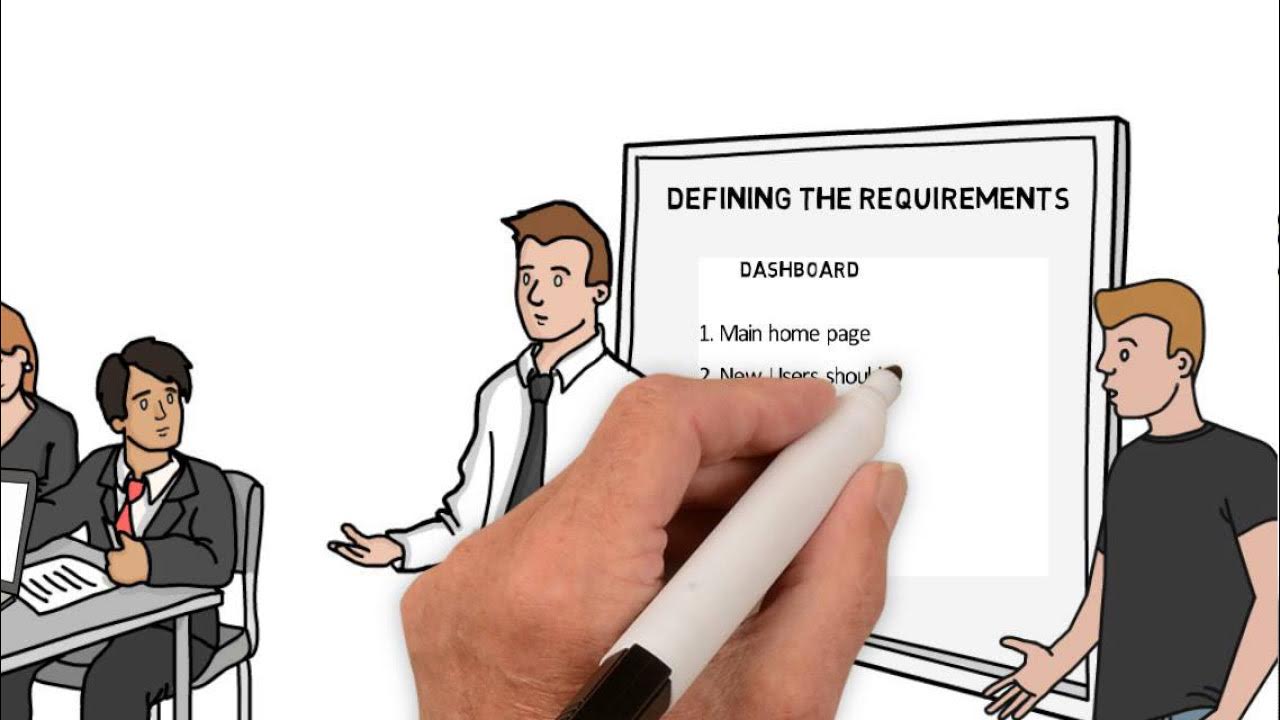Software Development Life Cycle: Explained
Summary
TLDRThis video script delves into the Software Development Life Cycle (SDLC), outlining its six key stages from planning to maintenance. It contrasts traditional methods like the waterfall model with modern agile approaches, highlighting the flexibility and continuous delivery of the latter. The script also introduces DevOps, emphasizing collaboration between development and operations teams, and the importance of CI/CD for frequent, efficient deployments. The narrative underscores the evolution of SDLC methodologies over six decades, showing how they've adapted to rapid technological changes and consumer demands.
Takeaways
- 📈 The Software Development Life Cycle (SDLC) is a standardized process that outlines the stages of building high-quality software.
- 👨💻 The concept of SDLC was introduced by Winston Roy in the 1970s to manage the development of large-scale business systems.
- 🔍 SDLC generally consists of six stages: planning and analysis, designing, development, testing, deployment, and maintenance.
- 💡 Prototyping is sometimes used in SDLC to validate ideas before major work begins, allowing for feedback with minimal effort and cost.
- 🌊 The Waterfall model is the first SDLC approach, characterized by strict adherence to sequential stages, but it has become less favored due to its inflexibility.
- 🚀 Agile philosophy emerged as a response to the limitations of Waterfall, emphasizing flexibility, continuous delivery, and early testing.
- 🔄 Agile methodologies, such as Scrum, involve short development cycles called Sprints, allowing for quick adaptation and feedback incorporation.
- 📝 Agile promotes minimal documentation, focusing on 'just barely good enough' documentation that facilitates collaboration and iteration.
- 🛠️ DevOps is a cultural shift that merges development and operations teams, emphasizing collaboration and the use of CI/CD for frequent code changes.
- 🔄 CI/CD (Continuous Integration/Continuous Delivery) practices enable teams to integrate and deploy code changes frequently, adapting quickly to consumer needs and feedback.
- 🔍 The script highlights the evolution of software development methodologies, from Waterfall to Agile and DevOps, reflecting a move towards more flexible and responsive processes.
Q & A
What is the Software Development Life Cycle (SDLC)?
-SDLC is a standardized process that describes different stages of building high-quality software. It was conceived in the 1970s and includes stages such as planning and analysis, design, development, testing, deployment, and maintenance.
Why was SDLC originally conceived?
-SDLC was originally conceived as a way of formulating the development of large-scale business systems, providing a structured approach to software development.
What are the six stages of SDLC mentioned in the script?
-The six stages of SDLC mentioned are planning and analysis, design, development, testing, deployment, and maintenance.
What is the significance of the planning and analysis stage in SDLC?
-The planning and analysis stage is significant as it involves collecting business and use requirements, cost and time estimation, scoping, and other planning activities, which set the foundation for the entire project.
What is the role of a software architect during the design phase of SDLC?
-A software architect analyzes the requirements and sets the high-level structure of the future system, describing how components will interact with one another and selecting the technology for development.
Why is the development phase important in the SDLC process?
-The development phase is important as it is where programmers use the architect's design to write code, turning the vision into a real product and revealing aspects of the final product to stakeholders.
What is the purpose of the testing phase in SDLC?
-The purpose of the testing phase is to review the product's code and usability for bugs and errors by testers and QA professionals, ensuring that issues are fixed before the product is deployed.
What is the difference between the waterfall model and agile methodology in software development?
-The waterfall model adheres strictly to the SDLC stages, with each stage starting only after the previous one is finished, making it less flexible. Agile methodology, on the other hand, welcomes change even in late development stages and focuses on continuous and early delivery of software.
What is the role of Scrum in agile software development?
-Scrum is a framework based on agile that breaks down development into smaller cycles called Sprints. Each Sprint involves all stages of SDLC, and at the end of the Sprint, a finished piece of the product is shown to stakeholders for feedback.
What is DevOps and how does it relate to the SDLC?
-DevOps is a cultural shift that merges development and operations teams into a single team with multi-disciplinary skills. It uses the typical agile planning and introduces CI/CD (Continuous Integration and Continuous Delivery) to streamline processes and optimize product delivery.
How does CI/CD contribute to the agile development process?
-CI/CD facilitates agile practices by allowing developers to deliver frequent code changes, integrating code on a regular basis, and preparing for deployment at any moment, which enables quick feedback and error detection in the early stages.
Outlines

This section is available to paid users only. Please upgrade to access this part.
Upgrade NowMindmap

This section is available to paid users only. Please upgrade to access this part.
Upgrade NowKeywords

This section is available to paid users only. Please upgrade to access this part.
Upgrade NowHighlights

This section is available to paid users only. Please upgrade to access this part.
Upgrade NowTranscripts

This section is available to paid users only. Please upgrade to access this part.
Upgrade Now5.0 / 5 (0 votes)





